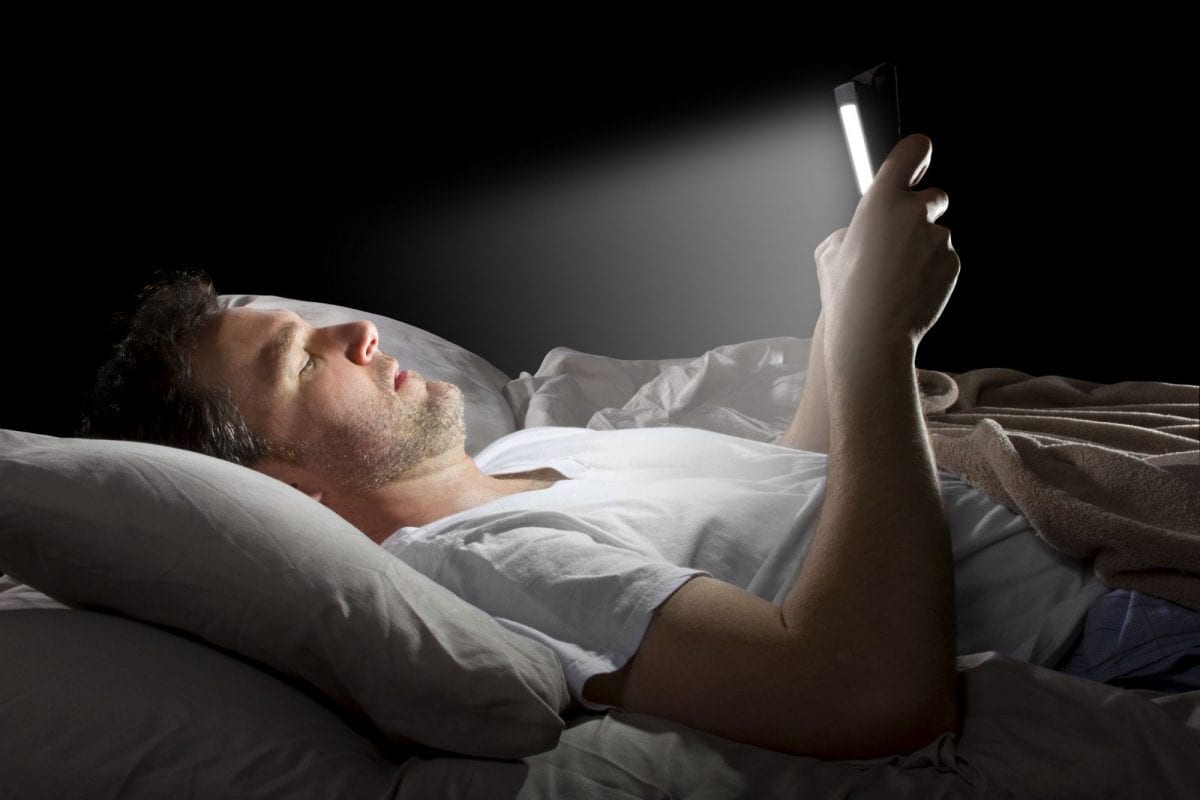On the light spectrum, blue light has the most efficient wavelengths and highest energy because it is one of the shortest wavelengths. In 2014 Shuji Nakamura won the Nobel Physics Prize for his responsibility in bringing the science behind blue light exposure to the industry.
There are a lot of therapeutic benefits to blue light in sunlight, where it is always present. When people are exposed to the blue light in sunlight, it can actually be a healthy experience. Part of the reason the sky appears blue is that when air molecules and blue wavelengths collide it makes our eyes process the sky as being blue.
Natural blue light also affects our mood. It can cause feelings of wellbeing, improve reaction times and alertness, and make us feel generally better.
Where Is Blue Light?
Of course, we are also exposed to a lot of blue light on screens. Cell phones, tablets, computers, gaming systems, and TVs all use blue light, so we are almost constantly being hit by it. Blue light is even in most commercial and home lighting in the form of LED or fluorescent lights.
The reason it is so prevalent is due to its low cost and efficiency and it is mostly converted to light with only a minimal amount being wasted in the form of heat.
Does Blue Light Affect Sleep?
Near-infrared and red light wavelengths have been removed with new and improved LED technology. According to LED Light Ideas, LED lighting products are up to 90% more efficient than incandescent light bulbs. The point was to increase efficiency, but it has come at a cost, mainly to our sleep. Human beings have adapted to being exposed to blue and red wavelengths together as they are in sunlight, and only during the day.
Part of the reason that blue light exposure at the wrong time of day is bad for sleeping is because it helps regulate the circadian rhythm, which is our sleep and wake cycles. It can hurt the circadian rhythm when you’re exposed to it at night, working against your natural internal timer.
This is partly why humans and many animals get tired after the sun—and the natural blue light—sets. Electronics have begun interfering with this natural arrangement.
Light comes in through the retina and then signals are sent to the hypothalamus part of the brain. This area is responsible for regulating sleep patterns, and when it gets dark, it tells the body to begin making sleep hormones. It also causes body temperature to drop. Without the absence of blue light, this can’t happen, and your body is still on alert.
Devices to Help with Sleep
If you’ve been struggling to fall asleep at night or stay asleep, sleep gadgets might help you quite a lot. A few favorites are Philips SmartSleep, SleepScore Max, Beddit, and Fitbit Versa. These sleep gadgets have a variety of features and functions.
One favorite is Dreem, which is a wearable headband device for sleep that tracks sleep by monitoring EEG. It offers detailed sleep analysis features as well as other techniques and tools that can be implemented to improve overall sleep quality.
Do Blue Light Blocking Glasses Help Sleep?
It should be noted that blue light glasses won’t do much to help the eyestrain associated with staring at a screen for too long. If you’ve had this problem just give your eyes a break every so often by looking away from your phone, computer, or TV screen.
Blue light blocking glasses do help you sleep, however. According to studies using blue light blocking glasses several hours before you plan to sleep can improve sleep quality and even mood. When people use blue light blocking glasses the light from screens doesn’t suppress melatonin, which is a hormone the hypothalamus tells the body to release when it gets dark.
How Long Before Bed Should I Avoid Blue Light?
According to most studies, it seems that you should try to avoid blue light exposure two or three hours before bedtime, but at least half an hour to an hour. This could be done by just turning off your lights and screens, but that isn’t always possible or desirable. The solution then could be using blue light blocking glasses several hours before sleep, which is an easy and painless solution.
As we navigate an increasingly digital world, understanding the intricacies of blue light becomes paramount in safeguarding our well-being. Armed with knowledge about its effects on our sleep patterns, eye health, and overall wellness, we hold the power to make informed choices. Whether through adjusting screen settings, investing in protective eyewear, or implementing mindful tech habits, this comprehension empowers us to mitigate the potential negative impacts of blue light exposure. By striking a balance between our digital engagements and our health, we pave the way for a future where technology harmoniously coexists with our well-being.








